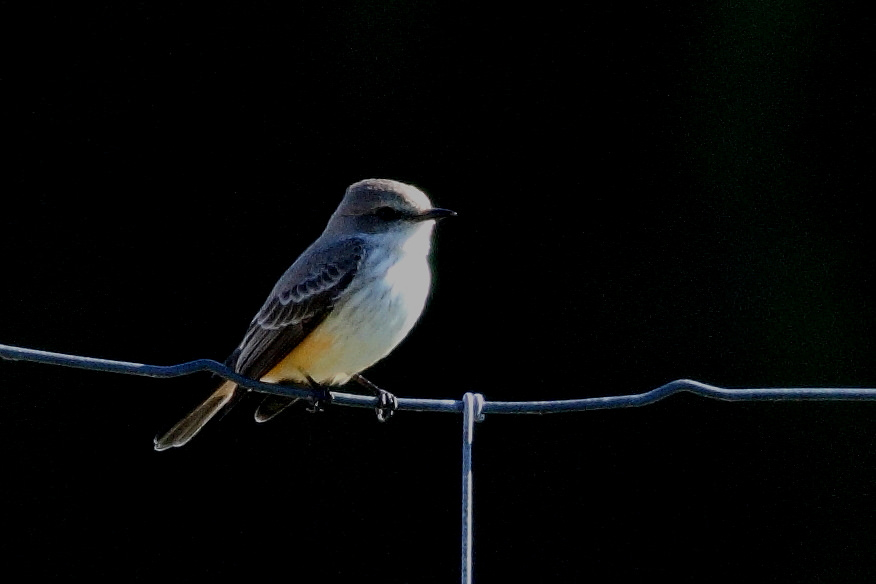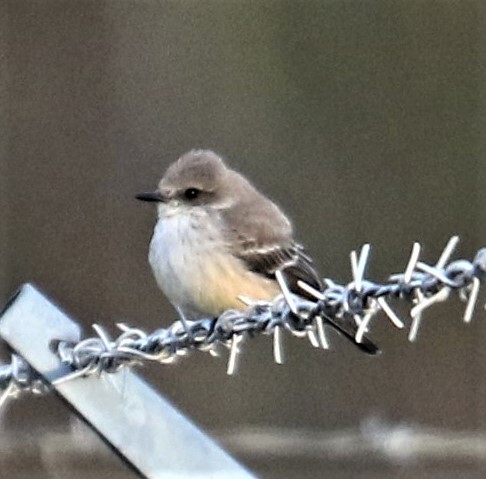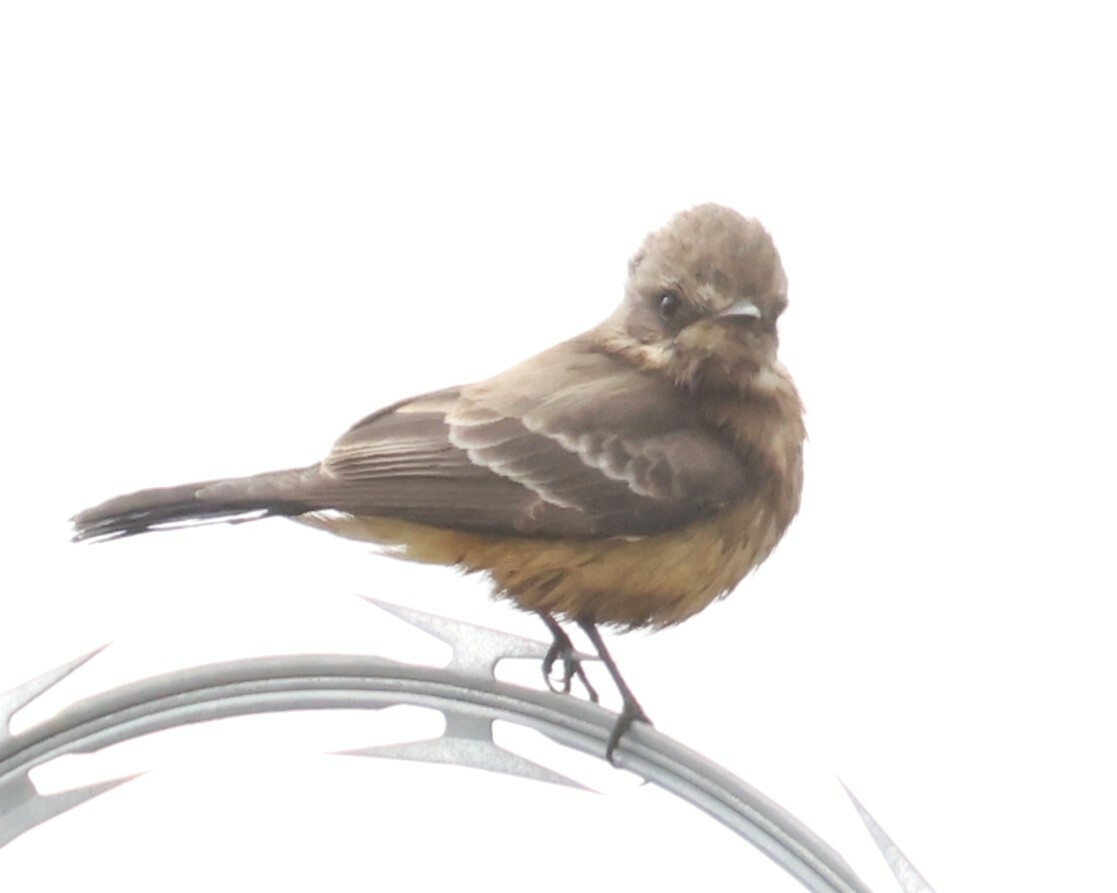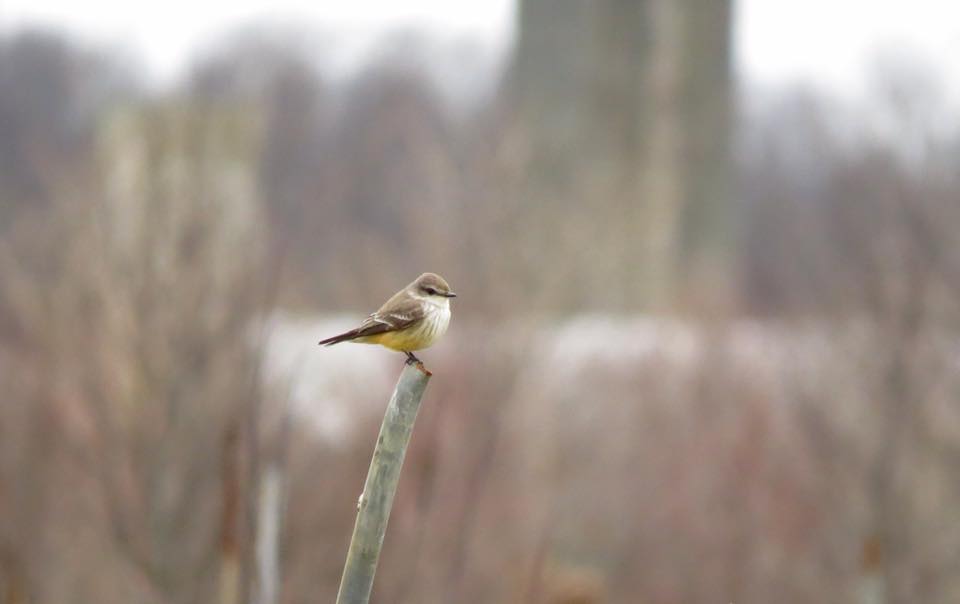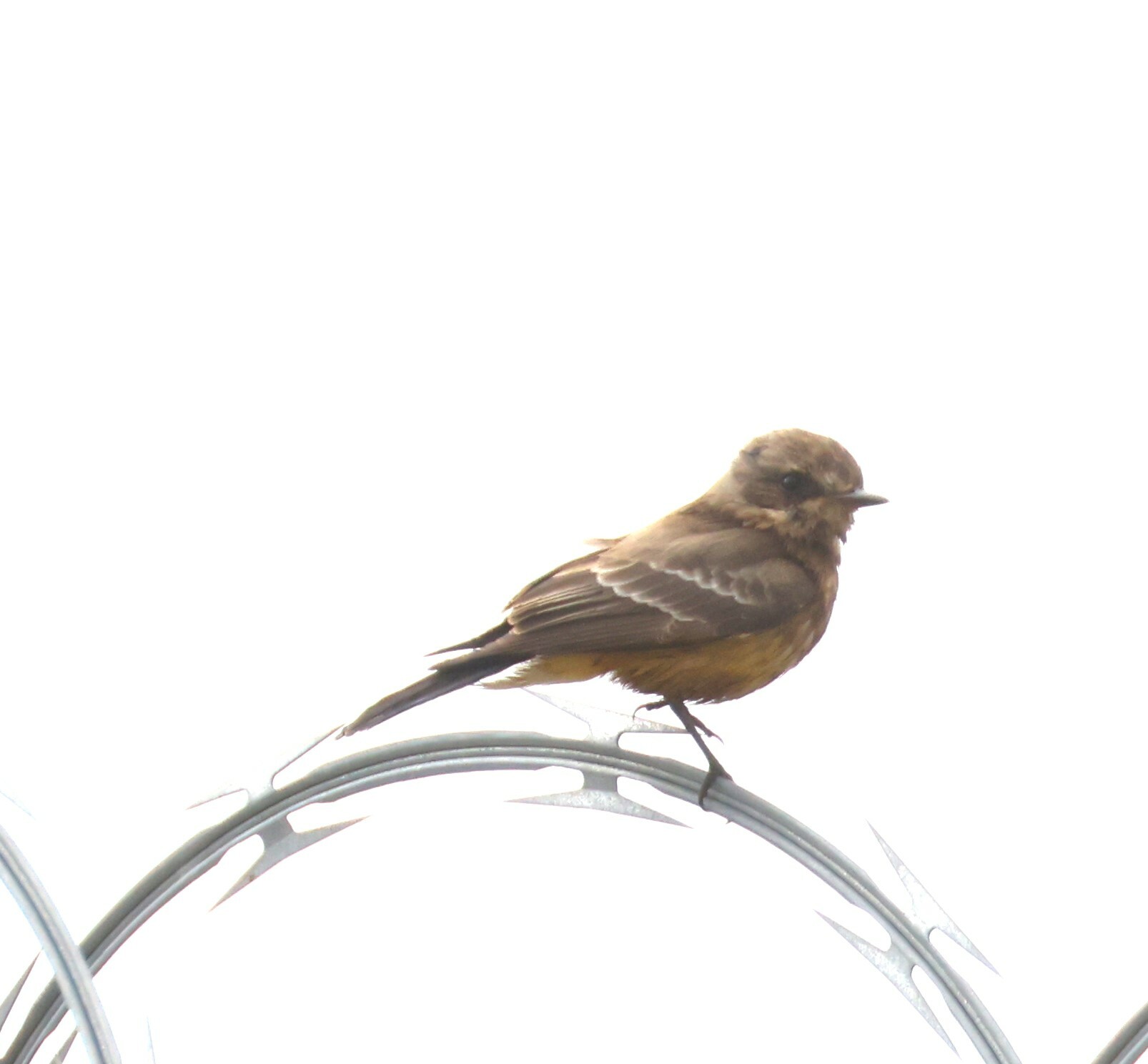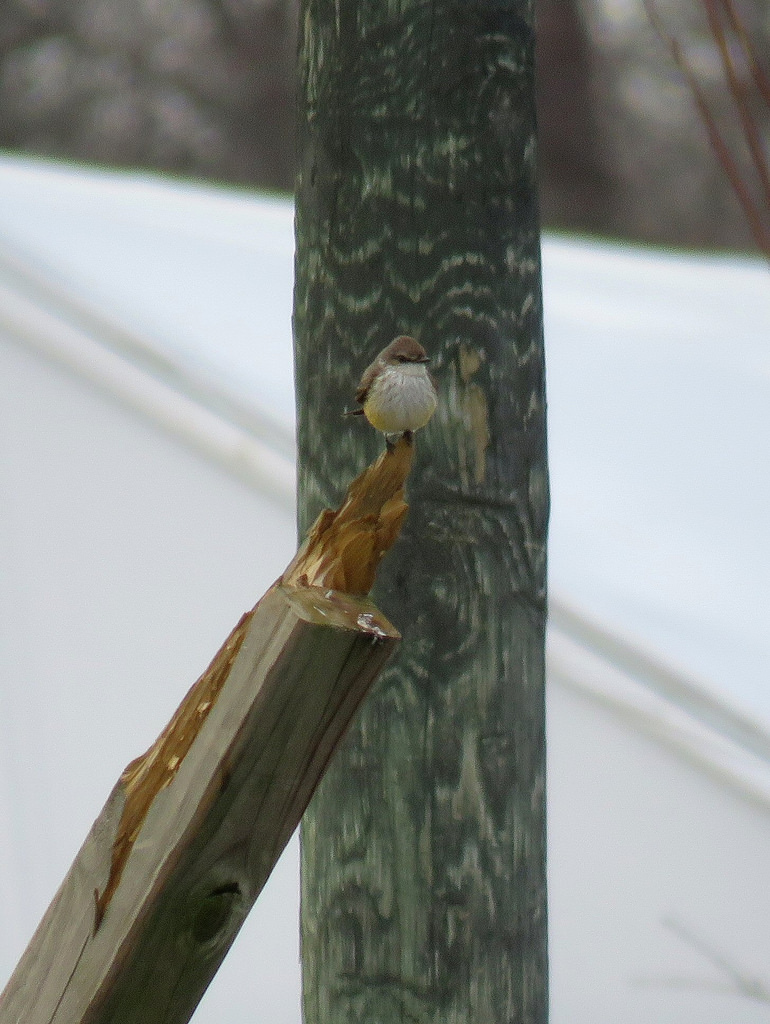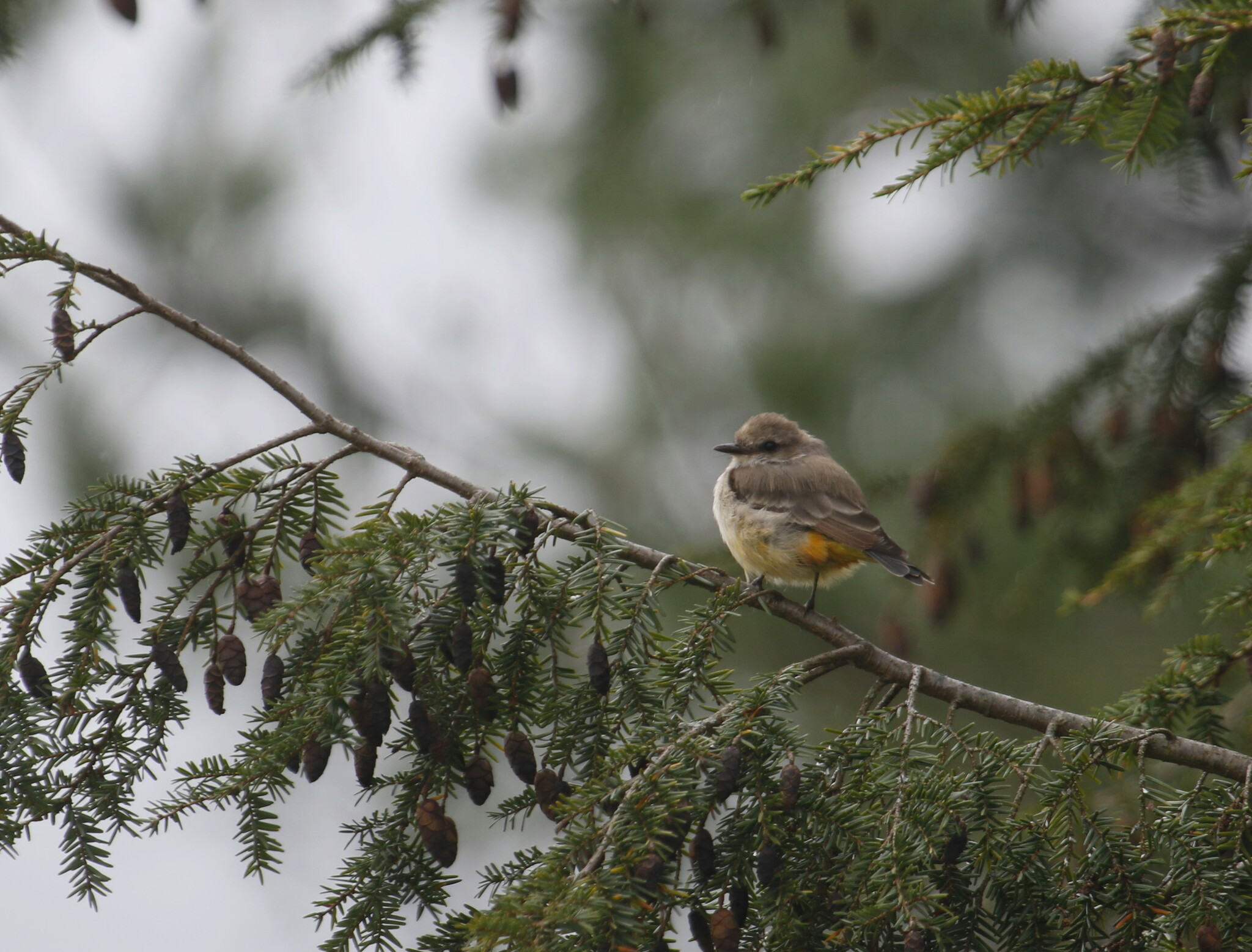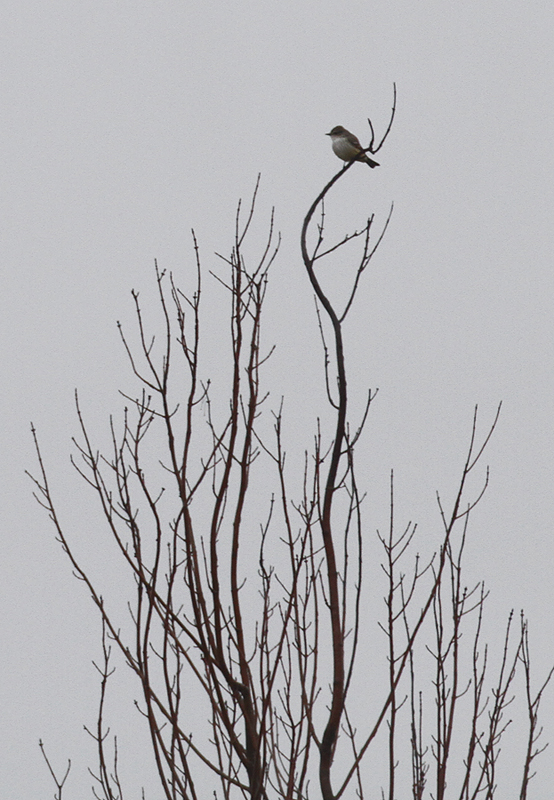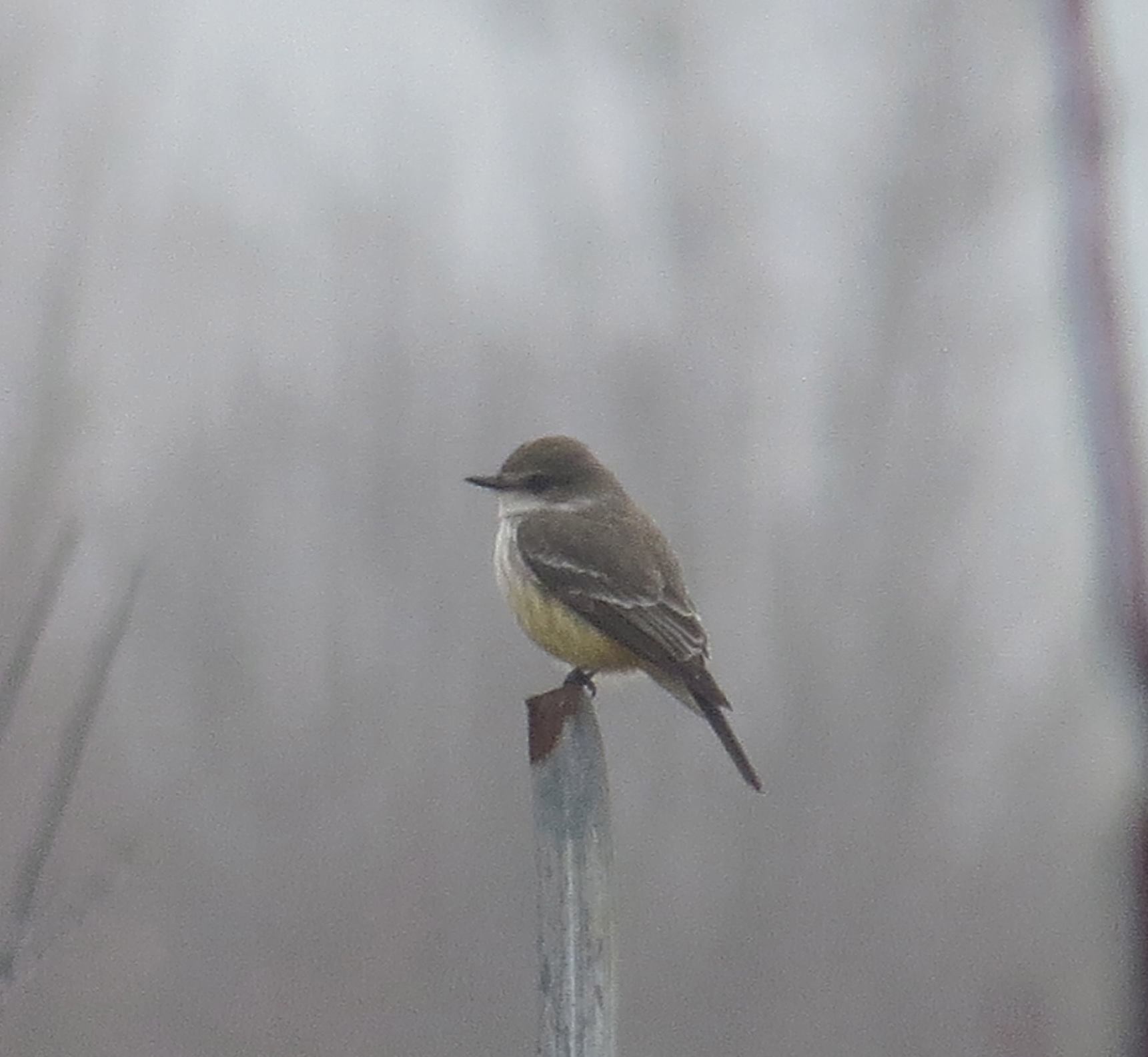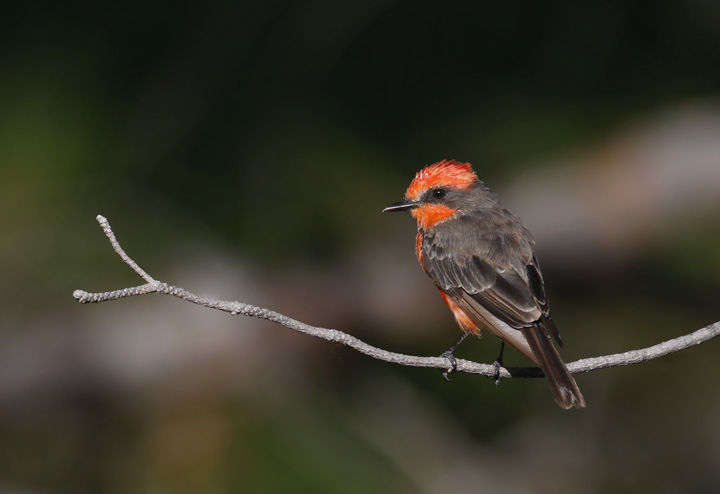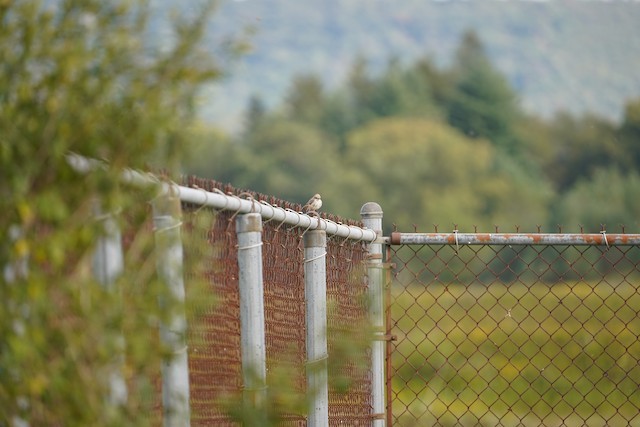Map Snapshot







27 Records
Status
Rare fall and winter vagrant. Maryland has two accepted records and two recent records that are sure to be accepted. The first was from Assateague Island (9/29/1991). The second was a hatch-year male in Dorchester Co., Maryland (10/1/2001). Mark Hoffman documented a third record on 12/27/2014. Our fourth record comes from Kent Co., where it was found by Jim & Trish Gruber and Amanda Spears during the Chesterville CBC (12/27/2015).
Seasonality Snapshot
Source: Wikipedia
| Scarlet flycatcher | |
|---|---|

| |
| in the Pantanal, Brazil | |
| Scientific classification | |
| Domain: | Eukaryota |
| Kingdom: | Animalia |
| Phylum: | Chordata |
| Class: | Aves |
| Order: | Passeriformes |
| Family: | Tyrannidae |
| Genus: | Pyrocephalus |
| Species: | P. rubinus
|
| Binomial name | |
| Pyrocephalus rubinus (Boddaert, 1783)
| |

| |
The scarlet flycatcher or austral vermilion flycatcher (Pyrocephalus rubinus) is a species of flycatcher, closely related to the vermilion flycatcher. It is found in southeastern Bolivia and Brazil, Paraguay to Argentina and Uruguay. It is recognized as a species by some taxonomic authorities, including the International Ornithologists' Union. Others still consider it to be a subspecies of the vermilion flycatcher.
Taxonomy
[edit]The scarlet flycatcher was described by the French polymath Georges-Louis Leclerc, Comte de Buffon in 1779 in his Histoire Naturelle des Oiseaux.[2] The bird was also illustrated in a hand-coloured plate engraved by François-Nicolas Martinet in the Planches Enluminées D'Histoire Naturelle which was produced under the supervision of Edme-Louis Daubenton to accompany Buffon's text.[3] Neither the plate caption nor Buffon's description included a scientific name but in 1783 the Dutch naturalist Pieter Boddaert coined the binomial name Muscicapa rubinus in his catalogue of the Planches Enluminées.[4] The type locality was restricted to Tefé on the Amazon River by the American ornithologist John T. Zimmer in 1941.[5] The scarlet flycatcher is now placed in the genus Pyrocephalus that was introduced in 1839 by the English ornithologist and bird artist John Gould.[6][7] The species is monotypic.[7] The generic name combines the Ancient Greek purrhos meaning "flame-coloured" or "red" and -kephalos meaning "-headed". The specific epithet rubinus is Medieval Latin for "ruby-coloured".[8]
The scarlet flycatcher was formerly considered to be conspecific with the vermilion flycatcher (Pyrocephalus obscurus). The species were split based on a molecular phylogenetic study published in 2016.[7][9]
Description
[edit]The scarlet flycatcher appears very similar to the vermilion flycatcher, but can be distinguished by its pointier wings. Their songs are also quite distinctive. Their range and breeding times do not generally overlap with the vermilion flycatcher.[9]
References
[edit]- ^ BirdLife International. (2017). "Pyrocephalus rubinus (amended version of assessment)". IUCN Red List of Threatened Species. 2017: e.T103682912A118649386. doi:10.2305/IUCN.UK.2017-3.RLTS.T103682912A118649386.en. Retrieved 30 April 2018.
- ^ Buffon, Georges-Louis Leclerc de (1779). "Le rubin ou gobe-mouche rouge huppé de la Rivière des Amazones". Histoire Naturelle des Oiseaux (in French). Vol. 8. Paris: De L'Imprimerie Royale. pp. 351–352.
- ^ Buffon, Georges-Louis Leclerc de; Martinet, François-Nicolas; Daubenton, Edme-Louis; Daubenton, Louis-Jean-Marie (1765–1783). "Gobe-mouche rouge hupé". Planches Enluminées D'Histoire Naturelle. Vol. 7. Paris: De L'Imprimerie Royale. Plate 675 Fig. 2.
- ^ Boddaert, Pieter (1783). Table des planches enluminéez d'histoire naturelle de M. D'Aubenton : avec les denominations de M.M. de Buffon, Brisson, Edwards, Linnaeus et Latham, precedé d'une notice des principaux ouvrages zoologiques enluminés (in French). Utrecht. p. 42, Number 675 Fig. 2.
- ^ Zimmer, John Todd (1941). "Studies of Peruvian birds. No. 38, The genera Oreotriccus, Tyrannulus, Acrochordopus, Ornithion, Leptopogon, Mionectes, Pipromorpha, and Pyrocephalus". American Museum Novitates (1126). New York: American Museum Natural History: 16. hdl:2246/4748.
- ^ Gould, John (1841). Darwin, Charles (ed.). The Zoology of the Voyage of H.M.S. Beagle, Part III. Birds. London: Smith, Elder and Company. p. 44.
- ^ a b c Gill, Frank; Donsker, David, eds. (2019). "Tyrant flycatchers". World Bird List Version 9.2. International Ornithologists' Union. Retrieved 17 August 2019.
- ^ Jobling, James A. (2010). The Helm Dictionary of Scientific Bird Names. London: Christopher Helm. pp. 326, 340. ISBN 978-1-4081-2501-4.
- ^ a b Carmi, O.; Witt, C.C.; Jaramillo, A.; Dumbacher, J.P. (2016). "Phylogeography of the Vermilion Flycatcher species complex: Multiple speciation events, shifts in migratory behavior, and an apparent extinction of a Galápagos-endemic bird species". Molecular Phylogenetics and Evolution. 102: 152–173. Bibcode:2016MolPE.102..152C. doi:10.1016/j.ympev.2016.05.029. PMID 27233443.
